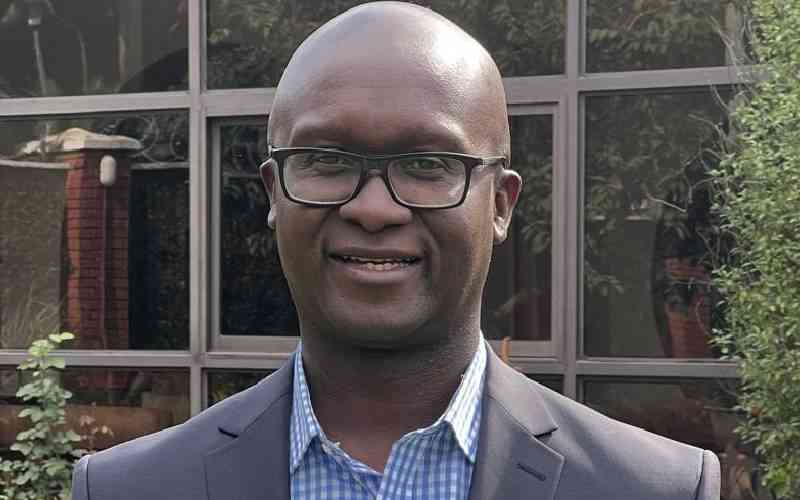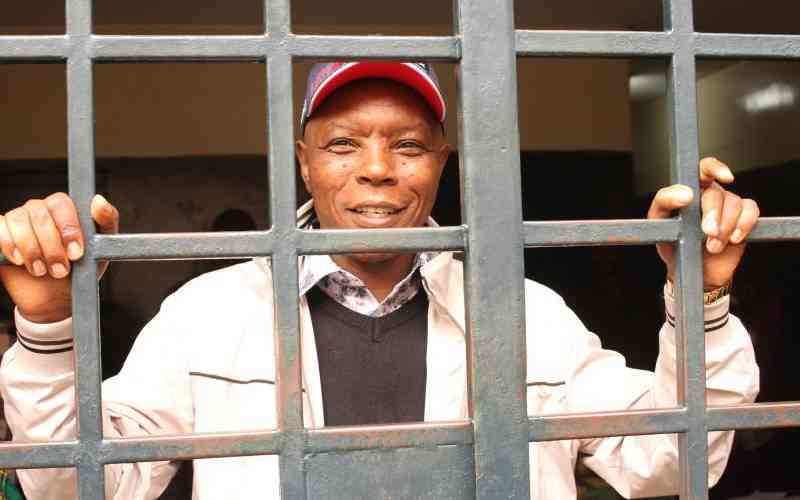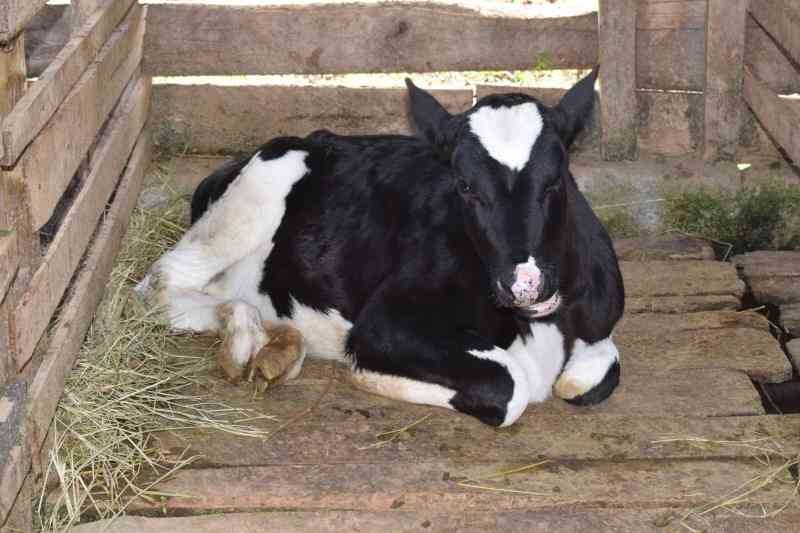 |
|
A man goes past a burning shop with his belongings at the height of the 2007/08 post-election violence. [PHOTO: FILE] |
NAIROBI: Details of the case The Hague Prosecutor Fatou Bensouda had woven around President Uhuru Kenyatta include names of prominent figures allegedly linked to the 2007 post-election violence.
Bensouda also sensationally claims Uhuru attended meetings to plan punitive attacks and bankrolled Planned Publication Mungiki raiders. The document sketches out the prosecution’s case that never went to trial after Bensouda was forced to withdraw charges for lack of sufficient evidence. However, it may be unsettling to President Kenyatta’s government given the damning claims against some senior officials who were however not brought to trial.
Secretary to the Cabinet Francis Kimemia, who served as Internal Security Permanent Secretary during the post-election violence, would have been named in the trial as having mobilised and armed Mungiki attackers to carry out retaliation attacks.
Solicitor General Njee Muturi, who was Uhuru’s personal aide, is accused by Bensouda of having been used to bribe the most crucial Witness Number 4 to withdraw his evidence.
Kenyatta is accused of participating in several meetings that Bensouda claims were to plan attacks to ensure then President Kibaki’s Party of National Unity retained power, including one held at State House, Nairobi, on December 30, when the disputed presidential election results that triggered the violence were announced.
Several meetings, according to the prosecution, were also held in early to mid-January at Jacaranda Hotel in Westlands, Nairobi Club and Blue Post Hotel in Thika where she alleges Uhuru gave money to Mungiki members including their leader Njoroge Gichere.
“Mr Kenyatta also gave money to individual Mungiki members, including a large sum of money to Mungiki leader Njoroge Gichere at a meeting at the Jacaranda Hotel in early- to mid-January 2008, and additional large sums of money to Charles Ndungu Wagacha for use in the attacks.”
She went on: “Similarly, during at least one of the multiple meetings held in the Kenyatta family’s Blue Post Hotel in Thika Mr Kenyatta contributed a large sum of money to Mungiki members.”
Bensouda says attempts to establish an alliance between the PNU and the Mungiki were made through several channels, including an alleged agent of the spy agency. “One was Geoffrey Machira, thought to be an agent in the National Security and Intelligence Service and who enjoyed direct access to President Kibaki and (Francis) Muthaura, the Permanent Secretary to the Presidency, Head of Public Service, and Secretary to the Cabinet,” she alleges.
She claims Uhuru met Mungiki leaders, Mr Machira and Mr David Manyara at his residence where he gave them large sums of money for distribution to the Mungiki to purchase weapons and other material. The money was distributed to co-ordinators among them Mrs Jayne Kihara and Mr John Mututho, both former Naivasha MPs.
In early January 2008, Uhuru allegedly met senior Mungiki members at the Nairobi Club to “persuade them to mobilise the Mungiki for the retaliatory attacks”. It was also reportedly attended by Muthaura.
Uhuru allegedly gave them money and told them that if more was needed, they should see Mr George Thuo, then Juja MP.
Bensouda claims eight Mungiki members who dealt personally with the accused and his agents were systematically eliminated. “These killings and forced disappearances were part of a “clean up” campaign to conceal the accused’s (Uhuru’s) involvement in the post-election violence,” she adds.
The detailed document was filed by Bensouda at the ICC on Monday evening, disclosing the nature of the case that awaited Uhuru before Trial Chamber V(b).
The document contains the material that was presented before the Pre-Trial Chamber in 2011 leading to the confirmation of charges against Uhuru, then Deputy Prime Minister.
Stay informed. Subscribe to our newsletter
And though the disclosure is of little consequence now, the evidence was revealed as a procedure to set the record straight, on the allegations that faced the only Head of State to have appeared at the ICC.
On December 11, 2014, the Trial Chamber ordered the Prosecution to file a redacted version of the Pre-Trial Brief (PTB). This was only six days after the case had been terminated.
Apparently, Uhuru’s trial was terminated after the prosecution failed to get crucial evidence and witnesses to adduce it in court. Months before the termination on December 5, the prosecution had conceded that they had no tangible evidence to sustain a trial.
The 73-page document is a highlight of the evidence that the prosecution hoped to use in proving that Uhuru held the highest responsibility for the killings, maiming, and eviction of persons and destruction of properties in Nakuru and Naivasha in January 2008.
The prosecution intended to table evidence of how Orange Democratic Movement’s supporters and non-Kikuyu in Naivasha and Nakuru were rounded up by Mungiki gangs, beaten or slashed to death, their bodies mutilated to conceal evidence on the mode of execution and how their families were evicted and property looted.
Uhuru, the accused, was going to be the focal point in the commission of all the atrocities, as the key organiser and financier. He was the central figure and all the players in the Bensouda script, acted on his instructions.
“The policy of the accused and other members of the organisation was simple: keep PNU in power through any means necessary,” the prosecution was to argue.
DEFENCE TEAM
Uhuru’s other contribution in the common plan, was to secure Mungiki’s co-operation, recruitment, mobilising, authorizing and directing the Mungiki and pro-PNU youth to implement the plan, by carrying out the attacks and soliciting the support and contributions of local politicians and businessmen for the operation. Also critical, he had to secure the approval of Mungiki leader Maina Njenga who was then in jail.
The prosecution would have adduced evidence on how persons implicated in the case had died mysteriously and others disappeared.
Uhuru’s defence team lead by Queen Counsel Steve Kay prepared to rebut the prosecution evidence with proof that Uhuru never attended any of the meetings he was said to have presided over
They were to argue that even the persons linked to Uhuru were not at the venues where they were alleged to have been.
The defence team shed light on the nature of Uhuru’s evidence during the Pre-Trial in 2011 when he testified in court. He denied any links with the Mungiki sect. He intended to demonstrate that during the 2007 elections the sect was more affiliated to the ODM and its leaders supported the party presidential candidate Raila Odinga.
STRONGEST EVIDENCE
Further, Uhuru planned to argue that he was not a member of the PNU which was then in presidential contest with ODM.
His strongest evidence was that he preached peace during the violence. He and other leaders travelled to various parts of Central Province and Naivasha, pleading with the youth to remain calm and not engage in violence.
His defence team was to demonstrate that a number of prosecution witnesses fabricated evidence against him and told lies to ICC investigators due to financial motivation.
Bensuoda withdrew several witnesses from the case after establishing that they had lied to the investigators, particularly on their presence during the alleged preparatory meetings.
Other witnesses pulled out after receiving threats and intimidation. Following the withdrawal of witnesses, the prosecution dropped the case against Uhuru’s co-accused Muthaura in 2012.
The prosecution accused the Kenya government of denying them access to vital documents that may have helped them to build a case against the President.
 The Standard Group Plc is a
multi-media organization with investments in media platforms spanning newspaper
print operations, television, radio broadcasting, digital and online services. The
Standard Group is recognized as a leading multi-media house in Kenya with a key
influence in matters of national and international interest.
The Standard Group Plc is a
multi-media organization with investments in media platforms spanning newspaper
print operations, television, radio broadcasting, digital and online services. The
Standard Group is recognized as a leading multi-media house in Kenya with a key
influence in matters of national and international interest.
 The Standard Group Plc is a
multi-media organization with investments in media platforms spanning newspaper
print operations, television, radio broadcasting, digital and online services. The
Standard Group is recognized as a leading multi-media house in Kenya with a key
influence in matters of national and international interest.
The Standard Group Plc is a
multi-media organization with investments in media platforms spanning newspaper
print operations, television, radio broadcasting, digital and online services. The
Standard Group is recognized as a leading multi-media house in Kenya with a key
influence in matters of national and international interest.









